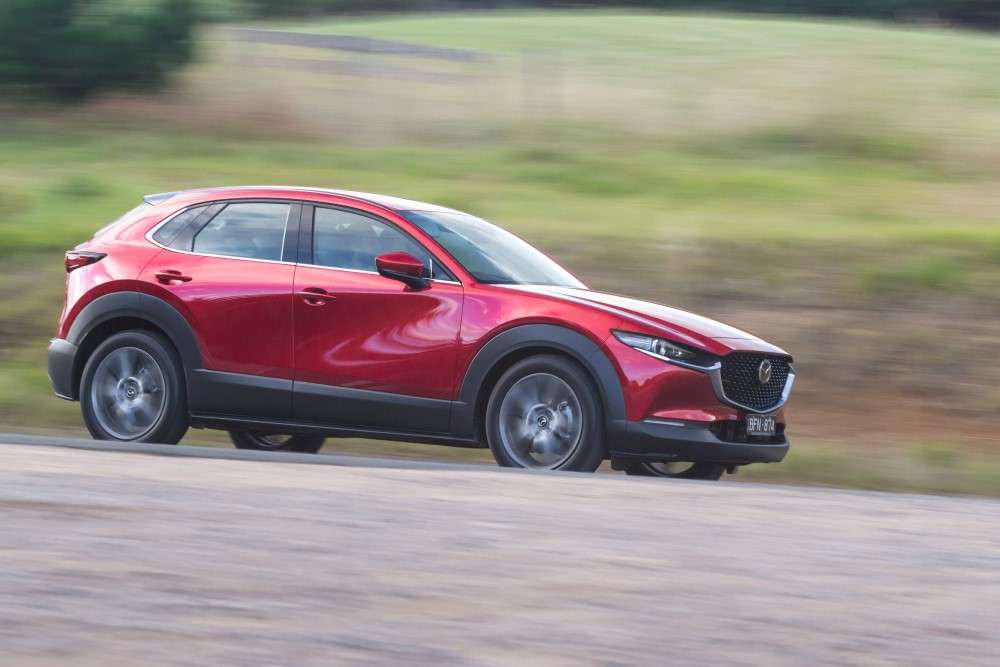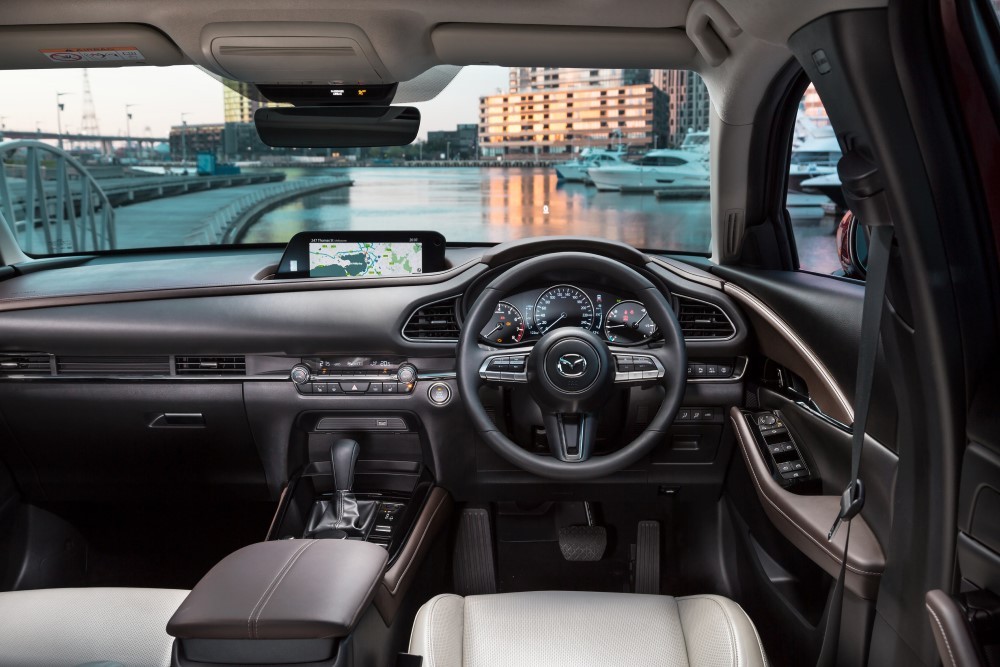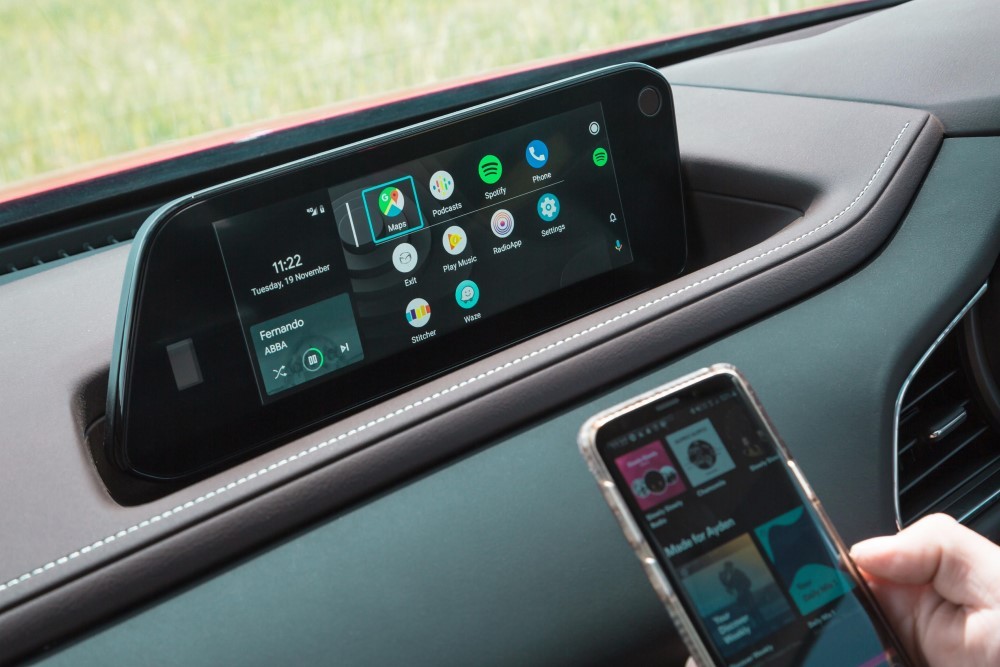
Sweet-spot Mazda Combines Quality with Style
Tennis isn’t for everyone but it can be a lot of fun. Get the game right and it rewards with a euphoric flow of movement and a great sense of accomplishment.
Mazda has absolutely nothing to do with tennis — other than it sponsored the Swiss Open in June — but it shares the sweet spot in its CX-30 model, a hatchback that’s classed as a SUV and despite a badge you’ve probably never heard of, is the brand’s fourth best-selling vehicle in Australia.
There’s a reason for its sales success that more than 8000 people who bought one this year are already well aware.
It’s the right size, has the right look, definitely has the cabin appeal and although it’s not the cheapest small-SUV on the lot, backs it up with quality and instant appeal behind the wheel. In short, it hits at the motorist sweet spot.
Prices start at what is an affordable level but to get the maximum joy from owning this car, you have to spend more than the base-model’s $30,000-odd sticker.
Unless you are a quiet driver, go for the bigger 2.5-litre engine. You don’t need all-wheel drive (AWD) unless you live in a particularly wet area or have to contend with a slippery gravel driveway.
Armed with that, go and have a drive. It may be more expensive than a Mazda 3 and have a smaller cargo area than a CX-5, but it carries it own style.
How much?
The Mazda CX-30 range starts at $30,210 (plus on-road costs) for the ‘Pure’ with manual transmission. Best you look higher for better equipment and the automatic gearbox. The model tested here is right at the pointy end of the CX-30 list. This G25 Astina AWD is $45,310 (plus costs) which is a lot for a small car. There is a front-wheel drive version at $43,310 (plus costs) which is the better deal given the chance of you needing all-wheel drive is slim. If you want to save even more, opt for the G20 which has the smaller (less powerful) 2.0-litre engine in place of the G25’s 2.5-litre mill.
How Big?
The CX-30 is classed as an SUV (and like my opinion of the Kia Niro, I really don’t know why) and has similarities with both the CX-5 (which actually looks like an SUV) and the passenger-car class Mazda 3 hatchback. The CX-30 is the shortest at 4395mm than both the CX-5 and Mazda 3 (by 180mm and 65mm respectively). It’s the same width as the Mazda 3 (but 50mm narrower than the CX-5); is lower at 1540mm than the CX-5 by 135mm (but higher than the Mazda 3 by 105mm); and sits on a shorter wheelbase of 2655mm which is 70mm shorter than the Mazda 3 and 45mm shorter than the CX-5. Note that the Mazda 3 has a longer platform than even the bigger SUV.
There’s no doubt that the CX-30 is a different animal than its siblings, especially in the Astina trim level that reeks of upper-level quality and equipment. It is a comfortable four seater with a tilt towards a sporty disposition. So the roof is quite low, as is the seat height, which can make it more difficult to enter and egress than the CX-5 SUV. This is particularly true for the more mature owner (or passenger) and for loading/unloading children, especially those in a bassinet or those who have to be lowered into a child capsule.
The boot takes a reasonable 317 litres (rear seat up) which is better than the Mazda 3’s 295 litres, but obviously not up to the CX-5 at 438 litres. However, the width of the boot area means you will fit a pram and some extra gear.

How fast?
Mazda didn’t build this to set land speed records, rather be reliable and durable with an accent of fuel efficiency. The CX-30 G25 succeeds and, pleasantly, there’s a lot to like about the tinge of sportiness from the 2.5-litre engine.
Better, it’s attached to a torque converter automatic with six forward ratios. Torque-converter autos are the old-school traditional automatics but in this era, car-makers including Mazda have made them more efficient.
They are also proven through the years and tend to have less problems than the more recently introduced dual-clutch transmission (DCT) and the continuously variable transmission (CVT).
The fact that Mazda has stayed with solid technology is definitely reassuring for buyers.
The engine is also a development of those from the past and there’s nothing extraordinary about its design which means it’s easy to service and repair (if ever necessary).
But the engine is a bit clever. It’s dubbed SkyActiv (no ‘e’) and is a high-compression engine to act like a diesel engine and burn a lean (less petrol, more air) mixture. At the same time, it has spark plugs to ensure a complete burn, thereby minimising emissions.
Owners would be unlikely to spot the difference over a non-SkyActiv engine. But the proof comes when it’s time to refill the petrol tank — which only needs the cheapest 91RON grade — and you see the economy of the engine.
How thirsty?
The CX-30 Astina G25 has a decent 139kW/252Nm of power but gets a claimed average of 6.6 litres per 100km, theoretically enough to give a range of 772km. And as mentioned, that’s on the cheapest grade of petrol.
What’s inside?
The CX-30 is a mid-priced small car that thinks it deserves a bit of extra luxury, at least in its Astina grade.
Standard features include a packed inventory of safety equipment with extras such as 360-degree camera, traffic sign recognition, rear cross-traffic alert; Bose premium audio with amplifier and 12 speakers and digital radio; Apple CarPlay and Android Auto; 8.8-inch central monitor; satellite navigation; heated front seats; leather upholstery; heated mirrors with auto fold; sunroof with slide and tilt; electric tail gate; LED headlights; and 18-inch alloy wheels.

How much room?
The CX-30 is a four-seater and comfortable for four adults, although taller rear-seat passengers may feel a bit squeezed with legroom.
The boot can store from 317 litres with all seats in place. The spare wheel is a space-saver.
How safe?
The CX-30 has dual frontal, side chest-protecting and side head-protecting (curtains) and driver knee airbag as standard. It has a five-star crash rating from ANCAP.
ANCAP gave it an 99 per cent score for adult occupants and 88 percent for child occupants. Pedestrian safety was 80 percent and its active safety systems are 76 percent. This test was done in 2019 and subsequently, the bar has been raised so it is had to compare this test result with, say, a rival car that was tested last year.
Safety features include autonomous emergency braking (AEB); lane-keep assistance and lane-follow assistance, blind-spot warning with collision avoidance, rear cross-traffic alert with collision avoidance, forward obstruction warning, exit warning for occupants, front and rear parking sensors, the 360-degree camera, and pedestrian and cyclist detection front and rear.
Service costs?
Mazda has a five-year, unlimited distance warranty. There is also a 24/7 roadside assistance program included with the car that lasts for the five years.
Service intervals are 12 months or 10,000km. The cost for the first three years of servicing under the capped-price service program is $1070, or an average of $356 a year.
Rivals?
Kia Seltos GT-Line AWD: $44,900*
Hyundai Kona N-Line AWD: $43,200*
Lexus UX200 Luxury: $46,085*
Toyota Corolla Cross Atmos 2WD: $43,550*
Volkswagen T-Roc 140TFSI AWD: $45,200*
* plus on-road costs
Pricing?
The Mazda CX-30 opens at $30,210 (plus on-road costs) for the ‘Pure’ version and rises to $48,310 for the top-notch hybrid Astina version. The Astina G25 AWD here costs $45,310 plus on-road costs.
Once you've found the right car, the next step is sorting out car finance that actually works for your budget. Credit One is Australia's best-reviewed finance broker, with 3,000+ five-star Google reviews from customers who've been through the process. Check out Credit One reviews to see what people say, or head straight to the loan repayment calculator to see what the numbers look like.
